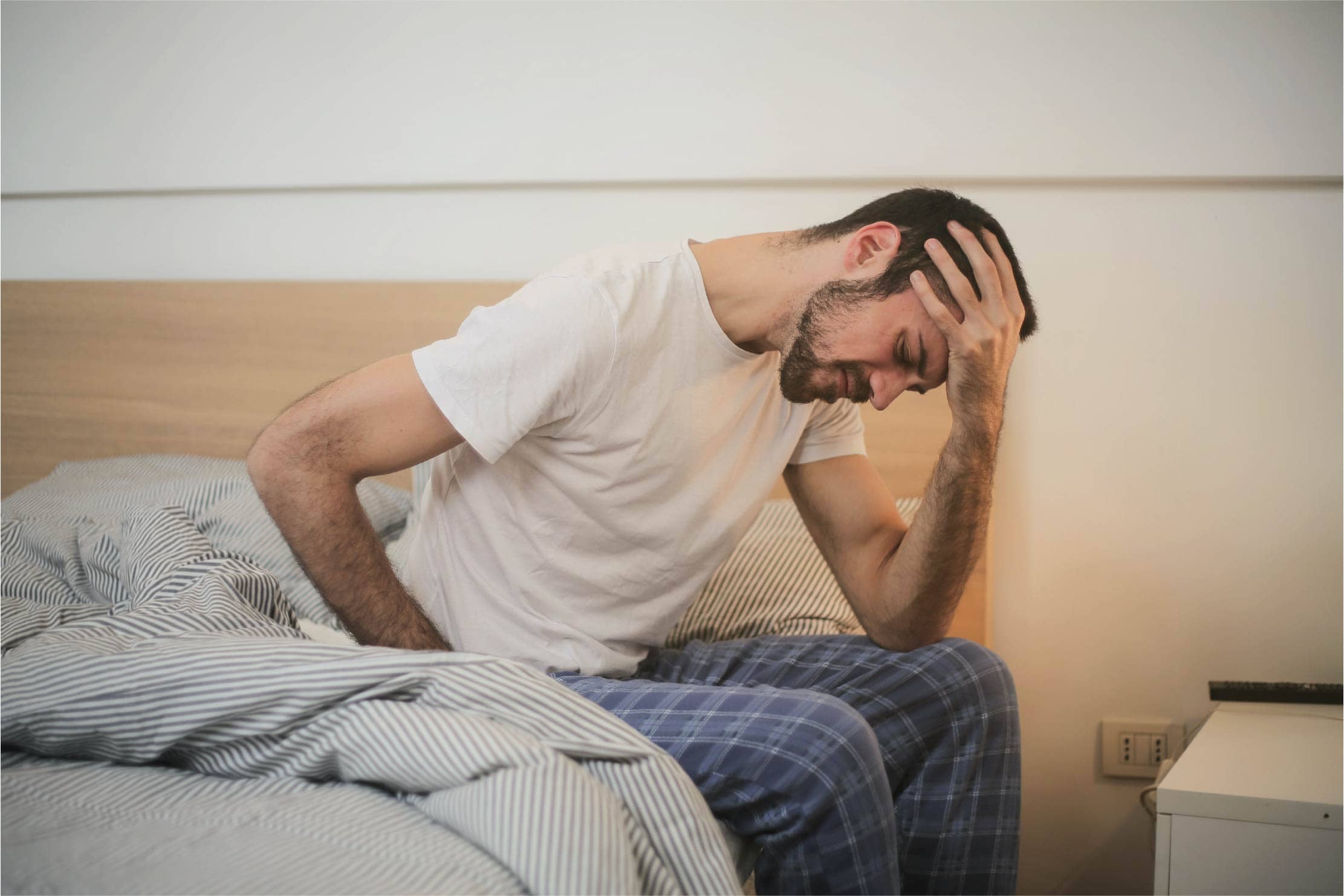Acupuncture has been used to treat minor ailments such as headaches for thousands of years by seeking to restore the flow of Qi and removing the negative energy that causes pain. Whilst western medicine and remedies may be more common treatments, and are generally accepted by the masses, there are strong arguments for the use of acupuncture against migraines and chronic tension headaches.
How does acupuncture help migraines?
NICE guidelines published in April 2021 recommend acupuncture for headaches and migraines. Similarly, a study reported by the BMJ suggests that acupuncture does have a positive effect on migraines with 1.4 to 2.1 fewer migraine days over a period of 20 weeks.
The process works to stimulate the nerves in the body, releasing hormones, such as endorphins, that trigger a response. The practitioner will usually place needles at specific meridians along the neck or back. This aims to slow pain transmission, and will last around 1 hour. Patients are advised to undergo at least 6 sessions.
Acupuncture has been shown to be particularly effective in preventing migraines, as well as reducing pain levels during attacks. It can also help by reducing inflammation, modulating blood flow, and can affect serotonin levels in the brain.
How does acupuncture compare to western medicine for treating migraines?
A clinical trial published by the BMJ reported that manual acupuncture was more effective, over a 20 week period, at preventing migraines than usual care. But, how does it compare to western medication?
Pharmacology has obvious results where pain treatment is concerned, however it does often have considerable side effects, and will lessen in effect the longer a patient takes them. Medications for migraines include beta-blockers, antidepressants, anticonvulsants, triptans, antiemetics, Benzodiazepines, and NSAIDs.
The side effects of western medicines on migraines tend to be far more severe than with acupuncture. Long-term effects of pain medications include addiction, internal bleeding, kidney problems, liver problems, and depression, as well as milder side effects such as nausea, drowsiness and excessive sweating. Whilst side effects of acupuncture, when administered by a qualified practitioner, tend to be mild and self-correcting in nature; bleeding and bruising around the puncture site, and feeling faint or dizzy.
Similarly, acupuncture has been deemed very safe by multiple medical bodies, so long as it is carried out by a qualified practitioner and patients have consulted with a doctor if they are in a high-risk group. For more information on acupuncture safety, visit the resources section on our website.
What is a migraine?
A migraine is a moderate to severe headache, usually felt as a throbbing pain on one side of the head. Affecting around 1 in 5 women, and 1 in 15 men, migraines are very common and will usually have symptoms including nausea, vomiting, and an increased sensitivity to light and sound.
Types of migraines
There are several types of migraines, ranging in severity and causes. The term Aura is used to describe a neurological symptom of migraines, usually visual in nature.
Migraine with Aura
70-90% of people that suffer from migraines experience this type. Common symptoms include a throbbing pain of one side of the head that will usually last between 4 and 72 hours. During this time, migraine sufferers may also experience nausea, vomiting and light/sound sensitivity.
Migraine without Aura
Those that experience Migraine without Aura will usually suffer the same symptoms as migraine with aura, however will also suffer additional visual disturbances such as blind spots, coloured spots, flashing lights before the eyes, tunnel vision, and in some cases, temporary blindness. Only 10-30% that suffer from migraines will experience this type, and usually less frequently.
Chronic Migraine
Chronic Migraine, or Chronic Daily Headache, is defined as having a headache for more than 15 days per month, over a 3 month period and tends to affect only 1% of the population. The impact of this type of migraine can be very disabling, taking sufferers out of work or school for half of the month. Some cannot work at all and may claim disability living allowance. The WHO have classified Chronic Migraine as being more disabling than blindness, quadriplegia, paraplegia angina and rheumatoid arthritis.
Menstrual Migraine
Whilst many women report that menstruation causes migraines, Menstrual Migraines is a specific condition caused by falling oestrogen levels and the release of prostaglandin, usually in the days leading up to, and through the first few days of a period. This type of migraine is thought to affect fewer than 10% of women.
Hemiplegic Migraine
Hemiplegic Migraine is a rare condition that induces a temporary weakness on one side of the body. This may involve the face, arm or leg and may be accompanied by numbness, or pins and needles. This may last anywhere from 1 hour to a day.
Migraine with Brainstem Aura
This is an unusual and rare form of migraines, previously named Basilar-Type Migraine. Symptoms of Migraine with Brainstem Aura will usually include visual disturbances in both eyes, speaking difficulties, hearing problems, tingling sensations in the extremities, lightheadedness, vertigo, and tinnitus.
Vestibular Migraine
Vestibular Migraine is usually characterised by experiences of vertigo, dizziness, and balance problems, alongside more common symptoms of migraines.
What causes migraines?
Migraines are thought to be somewhat hereditary, with around 50% of sufferers having a close relative that also suffers from migraines. Whilst the exact causes of migraines are unknown, they are thought to be the result of neurological changes in the brain. Some people find that attacks are triggered by:
- Stress
- Light or sound sensitivity
- Fatigue
- Menstrual cycle
- Food and drink
What else can acupuncture be used for?
Acupuncture is used for a wide range of both physical and mental health problems to some success. These include:
- Joint pain
- Dental pain
- Stress
- Anxiety
- Menopausal symptoms
- Chronic pains
- Menstrual cramps
- Chemotherapy induced nausea
- Post-operative pain and nausea
Sources:
- https://www.acupuncture.org.uk/a-to-z-of-conditions/a-to-z-of-conditions/1148-migraines.html
- https://www.bmj.com/company/newsroom/acupuncture-can-reduce-migraine-headaches/
- https://www.migrainetrust.org/living-with-migraine/treatments/acupuncture/
- https://www.migrainetrust.org/about-migraine/types-of-migraine/
- https://www.nhs.uk/conditions/migraine/
- https://www.healthline.com/health/acupuncture-for-headaches#benefits
- https://americanmigrainefoundation.org/resource-library/understanding-migraineacupuncture-and-migraine-finding-a-combination-that-sticks/
